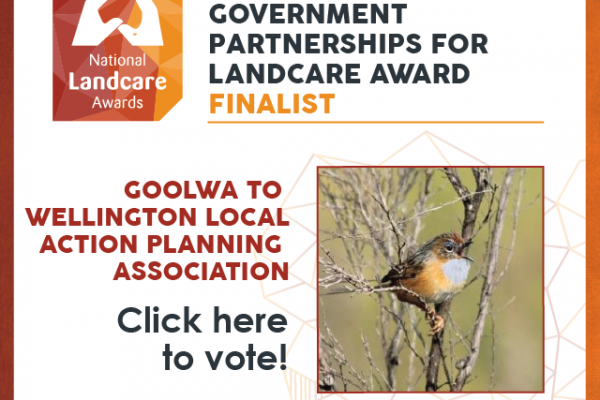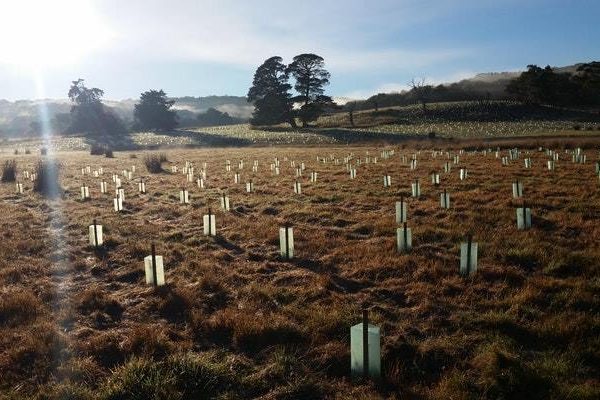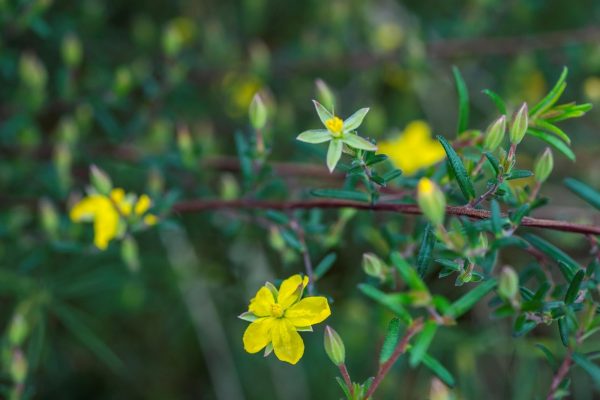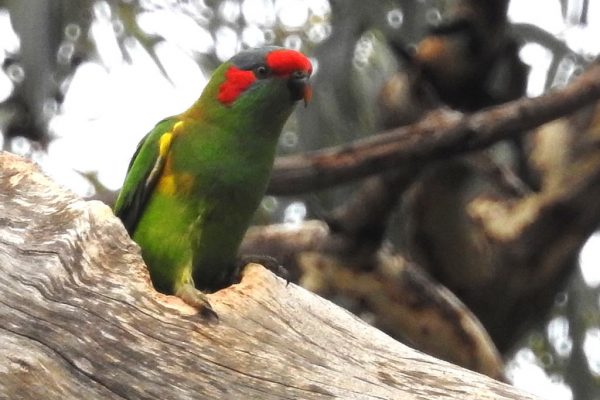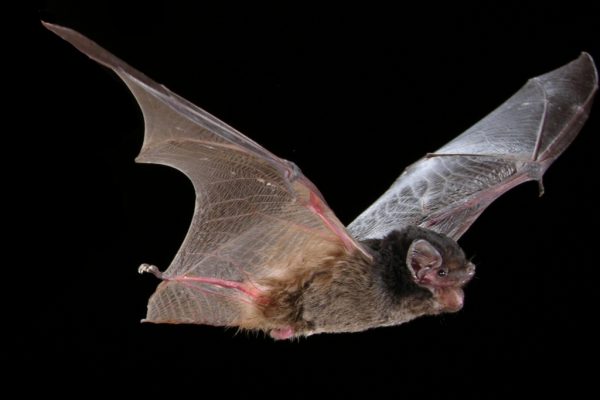-
Vote for GWLAP at the National Landcare Awards
CLICK HERE TO VOTE GWLAP are going to the National Landcare Conference as finalists for a National Landcare Award! You can help us bring home a prize by voting for us in the People’s Choice Award. We are very proud to be considered in the Australian Government Partnerships for Landcare category. Our nomination is […]
Continue reading -
GWLAP’s 20 Million Trees projects are right on track
GWLAP’s 20 Million Trees projects are right on track GWLAP are currently delivering a large scale revegetation project through the 20 Million Trees program and Landcare Australia. Creating Critical Catchment to Coast Connectivity (apologies to all with aversions to alliteration), will buffer and link important areas of bush around the lower lakes to protect habitat for the Mount Lofty Ranges […]
Continue reading -
Restoring Red-gum woodlands
We are excited to add a new project to our on-ground works activities thanks to funding from the Native Vegetation Council. The project will tackle weeds in high quality remnant Red-gum woodlands over the next three years. The area will include more than 700ha over 20 individual private properties and help protect some rare and […]
Continue reading -
What’s living in our revegetation sites?
Finniss Revegetation Site On the 24th October 10 bird watchers joined us on a walk through a private revegetation site at Finniss – 38 different species were spotted (list below). ‘Watkins’ – revegetation undertaken as part of the Coorong, Lower Lakes and Murray Mouth Community Revegetation Project managed by Goolwa to Wellington LAP. Plantings were […]
Continue reading -
Halloween is here – it’s time to get batty!
Trick and Treaters aren’t the only ones excited about the end of October. Bat Week which coincides with the lead up to Halloween is also a time for people to become more aware of their local bat species. Residents of the South Australian Murray-Darling Basin region now have the opportunity to get excited about bats […]
Continue reading -
Rare Hibbertia found near Yundi
Ben Simon from Goolwa to Wellington Local Action Planning Association (GWLAP) thought he may have found something special when he stumbled across an odd looking Hibbertia in some undergrowth near Yundi. Now we know he really did. The State Herbarium of South Australia has confirmed that Ben’s find is a previously unknown population of Hibbertia […]
Continue reading -
Wonderful walk at Scott Conservation Park
We were so lucky to have beautiful weather on Wednesday for our bird walk at Scott Conservation Park with the Friends of Cox Scrub. It was glorious. The group of 17 bird watchers spotted 38 species of birds on the 2.5 hour walk with John Gitsham and Wendy Phillips helping with identification. The birds included: […]
Continue reading -
Volunteers changing the view from the freeway
Jakem farm is a 4WD park situated on a series of bald hills next to the freeway near Callington – but not for much longer! It will soon be a Eucalyptus odorata grassy woodland – a nationally threatened vegetation community. Jakem farm and a neighbouring property make up a 130Ha site that is being revegetated […]
Continue reading -
Wow! Watchalunga planting day a huge success!
Goolwa to Wellington LAP and Nature Foundation SA would like to extend our heart-felt thanks to the 121 enthusiastic volunteers who came out Sunday’s planting day at Watchalunga Nature Reserve. Together we have achieved amazing results and made the Watchalunga Planting Day in 2017 a huge success! We planted 3800 native plants (31 different species) that […]
Continue reading -
GWLAP citizen scientists monitor local bats
Since January, GWLAP citizen science volunteers have recorded bats on over 30 different nights using Anabat bat detectors. On any given night there were up to four Anabat recorders at work in different locations. Anabat detectors record the ecolocation calls of microbats (insect eating bats) and convert these calls to sonographs. Bats can be identified […]
Continue reading

